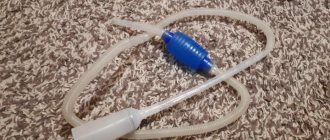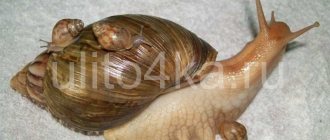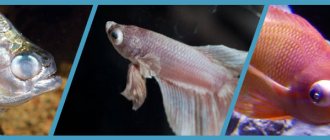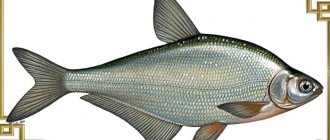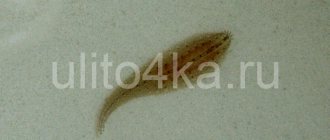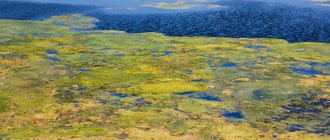How to clear a pond of filamentous algae
In the summer, in our new garden pond, a whole blanket of green filamentous algae formed and quickly grew over the surface. They turned out to be an aquatic weed, the filamentous algae Cladophora glomerata, English: Blanketweed. Individual green threads (thalli of the filamentum) intertwined together form a “blanket” that floats underwater near the surface of the pond. Here's what I learned about this unusually active green algae that resembles tangled mermaid hair.
Filamentum (Cladophora glomerata)
In small quantities, filamentum is not dangerous and even benefits the aquatic system. Fish and frogs love to lay eggs in it. Tadpoles and other aquatic fauna hatching from eggs happily eat the filament and what gets stuck in it. A blanket of intertwined cladophora covers the water from the sun, which means the water in the pond blooms less.
[wp_ad_camp_2]
However, under favorable conditions, filamentous algae grow excessively. They begin to interfere with the circulation and aeration of water in the pond, oppress other aquatic plants, and consume the necessary oxygen. If you have fish in your pond, they may get confused and die in the wilds of the thread . The spontaneous spread of filament is a serious danger to natural and ornamental bodies of water.
The filamentous cladophora should not be confused with another ornamental aquatic plant. Ball moss,
Aegagropila linnaei, is often called spherical cladophora in the old fashioned way.
Why are planaria dangerous?
Small parasites dramatically cause fish diseases, but they affect the ecosystem. The worms feed on the shrimp eggs, reducing the population in the shrimp tank. They reduce the number of eggs, eat small vertebrates, crustaceans, and fish food.
Shrimp often suffer from the malicious actions of white planaria. The worms crawl under the shell of the shrimp and clog the gills, which leads to the death of the shrimp from hypoxia.
Worms secrete caustic mucus, which can be harmful to some fish.
In addition, worms spoil the aesthetic appearance of the aquarium. They crawl along the walls and appear on the surface of the ground, which looks very unpleasant.
If the population of shrimp or crustaceans in the aquarium has sharply decreased, you should look for planaria.
Algae in the pond
The garden pond on our site has existed for less than a year. Therefore, not having much experience in growing aquatic plants, I thought that the green algae in the water was overgrown hornwort submerged. One day I decided to remove the rapidly growing green blanket from the pond. Having picked up the plant by one end, I began to pull it out of the water, but it kept dragging on and did not end. For a second I felt the almost unreality of what was happening, because our pond is less than a cubic meter!
Having pulled the two-meter thread completely out of the pond, I was once again amazed at its size - see the photo! After all, back in the spring I completely cleaned the pond and did not see any algae. Cladophora smelled strongly, to the point of dizziness, of mud and water. Having carefully examined the green threads of cladophora , I found pieces of overgrown hornwort entangled in them. They were slightly different from the dark green filament in a yellowish tint.
Decapsulation of Artemia eggs
Tekhi
— Yur, are decapsulated brine shrimp eggs a good food?
Yu.V.
- Very. Are yours dry? Soak in water and feed.
Tekhi
- No, I bought ice cream. But I was told that in order to feed the fish, they must first be decapsulated. How to do this? And for what?
Yu.V.
— Artemia eggs are covered with a very durable chitinous shell. It is not even digested in the fish's stomach. Protective device - the fish eats crustaceans along with eggs, and then spreads the eggs throughout the sea. )))
Tekhi
- How does a sparrow grow a rowan?
Yu.V.
- Yes. )) Therefore, in order to feed the fish, this shell must be removed - the eggs must be decapsulated.
Tekhi
- And how is it removed?
Yu.V.
- Differently. You can use hydropyrite, you can use bleach, but most often in everyday life it is removed with ordinary “whiteness” - bleach. Tell?
Tekhi
- Certainly!
Yu.V.
— The literature writes that the concentration of sodium hypochlorite (the active ingredient in “whiteness”) should be 9%. In reality, it is not standardized and can be from 5 to 15%. Therefore, having bought a new bottle of “whiteness”, I usually start with it diluted in half, after which, if the process takes a suspiciously long time, I increase the concentration. Well, if I’ve already tried this particular bleach, I often immediately use it undiluted.
There is one trick - when decapsulating the eggs you need to stir all the time. That's why I usually do this in an incubator for brine shrimp - let the compressor run while I drink coffee. )) By the way, an incubator with cleaning of husks and cysts is exactly the same)))
Tekhi
“I understand, I’ll have to do it.”
Yu.V.
- Yes. Basically, I take my incubator and pour a teaspoon of eggs into it. Do not create a lot of rash at once, there should be an acceptable combination of eggs and bleach. ))
Then I fill in the “whiteness”. 200 grams. More can be done, up to 300.
Well, I turn on the compressor.
The eggs are kind of brown in color.
That's it, you can calmly go about your business. From 15-20 minutes to 3 hours, as it turns out.
Tekhi
- What were you doing on the balcony?
Yu.V.
- Yes. Bleach stinks a lot, I don’t need this happiness in the kitchen. ))
Tekhi
- How do you know when it’s ready?
Yu.V.
- It’s very simple - the eggs will first turn whitish, and then turn slightly pink and begin to float. Here look
Tekhi
- Wow! So, what is next?
Yu.V.
— Then we wash and package. )) I usually wash it in the same incubator. I turned it off, the eggs settled, drained the white, filled it with water and turned it on again.
And so on several times. And then I filter them through a cloth.
Tekhi
- Oh, I heard that the cloth should be synthetic! Why, don’t you know?
Yu.V.
- I know. )) Because cotton bleach can corrode. This is all just nonsense, if you first wash the eggs of bleach, then no one will eat anyone. And it filters better through cotton or linen.
Tekhi
— How do you package it?
Yu.V.
- Yes, it’s very simple, Ir, I put a little bit into an ice tray, a package of quail eggs, etc. and add a little water - a protective layer. And into the freezer.
And then he took it out and into the water. It melts for itself, the fry eat it for themselves. ))
Tekhi
- Great! What should I do if I don’t have an incubator yet?
Yu.V.
- Yes, everything is exactly the same, only the container with “whiteness” needs to be chatted and stirred all the time. That's how I did it here.
Tekhi
- I see, thank you very much!
Yu.V.
- You're welcome. After you. If the whiteness turns out to be weak, then you can put it in the freezer for an hour. Water freezes earlier than the HCN solution, therefore, as ice flows along the walls of the bottle, take it out and salt the inner, unfrozen part. Concentration will increase.
Well, one last thing. If everything is done correctly, then decapsulated eggs can also be used to hatch crustaceans for food. At the same time, it will even be more nutritious than regular, because... does not expend its energy on decapsulation. But its output will be much less.
Tekhi
- Thank you, Yuri!
Share link:
Similar
How to clear algae from a pond
First, you need to physically remove the thread from the pond by wrapping it around a stick. Like other organic pond waste, green algae is a great addition to garden compost. They quickly rot and enrich the compost with nutrients.
Complete cleaning of the pond from filament residues and preventing its further reproduction is achieved with the help of biological bactericidal agents. In our market these are, for example, Viresco Aqua Pond Clear, Evolution Aqua Pure Pond, Nishikoi Clear Waters Pond, as well as barley straw or its extract. Such products are created for fish ponds and are safe for the environment: frogs, toads, birds, pets and aquatic plants.
Reasons for appearance in the aquarium
The most common species that appear in the aquarium are mourning, white or black planaria. They live in the ground, on plants, and can crawl along glass walls. The easiest variety to spot is the white planaria. White planarians are less dangerous than other representatives. It is easier to get rid of them immediately after they appear, since the milky white planaria stands out against the background of the aquarium. Brown and mourning worms are practically invisible; they can constantly live in the soil.
Worms appear when the owner of the aquarium forgets to clean the pond with fish on time. In a good, clean environment they are less common. Parasites often end up in a pond along with purchased nutrient soil. They are completely invisible in the nutrient substrate, so the aquarist lays soil on the bottom of the tank, not knowing that he has brought parasites.
The parasite lives on infected fish, crustaceans, shrimp, and vegetation. You can accidentally buy worms at a pet store already with worms and bring them home. Often parasites are brought along with the decor for the tank, especially if these are natural stones collected near natural bodies of water.
Other reasons for the appearance of worms in an aquarium:
- purchasing infected snails;
- overfeeding fish;
- untimely cleaning of the aquarium;
- the presence of worms in the food.
When worms enter the aquatic environment, they begin to reproduce. They do this quickly, filling the entire tank. Parasites feel best in a dirty environment and with changes in temperature.
How to get rid of algae
Under favorable conditions in a garden pond, filament can grow up to 2 meters per day! Such conditions for green algae are: bright light, increased water temperature in the pond in summer, high saturation of water with macroelements and insufficient water aeration.
Initially place the garden pond in partial shade (no more than 4 hours of direct sun per day). Cover 2/3 of the surface of the pond with aquatic plants. Read about how to properly build a pond on your property with your own hands in this article.
The macronutrients on which algae literally thrive in a pond are compounds of nitrogen and phosphorus. These popular fertilizers end up in garden ponds when they run off from lawns and flower beds. Waste from aquatic fauna, aquatic weeds and rotting leaves that fall into the pond also enriches the mineral composition of the water. It is important to always use only aquatic soil and fertilizers when planting aquatic plants.
[wp_ad_camp_2]
To get rid of algae in a pond, the following are also used: pond dyes (prevent the penetration of ultraviolet radiation into the water), UV filters, electrical agents that release copper ions, as well as ultrasonic agents.
In ponds with fish, it is necessary to control their quantity. It is also believed that filling a pond with tap water can lead to an increase in algae. However, this issue remains controversial. Tags:Aquatic plants, weeds
Question answer
What can planaria be most often confused with?
Inexperienced aquarists may confuse small planarians with nematodes (and vice versa). The key feature is the flattened shape of the body and the triangular head on one side of the body of planarians.
How do planaria appear in an aquarium?
Most often, penetration occurs with the help of eggs, which are unnoticeable and resistant to many factors. However, adult planaria can also enter aquarium plants.
Can planaria attack fish?
Even large planarians are too small for adult fish. But larvae that have just emerged from eggs are at risk.
Can a small number of planarians be safe?
If you do not see these flatworms and cannot determine their presence by the behavior of fish or shrimp, then there is no cause for concern. But the absence of eggs and juveniles, even though they were there before, is a reason to think that planarians are eating up the eggs.
Completely removing planaria from the aquarium is not an easy task, so it is much easier to prevent the worms themselves or their eggs from getting there, and carefully monitor everything new that will be placed in the aquatic tank.
Life cycle of Spirogyra
The life cycle of Spirogyra consists of several stages:
- vegetative reproduction or sexual conjugation;
- connection of cells of adjacent threads and formation of a copulation channel;
- flow and exchange of protoplasmic fluid between cells;
- a zygote is a plant cell in which an exchange of protoplasmic fluid has occurred;
- wintering of the zygote. During the cold period, the zygote is covered with a dense shell. With the onset of heat, meiotic division occurs underneath it, resulting in the formation of 4 spores. Three of them die, and the remaining cell grows by division into a new filament of spirogyra.
The development cycle of Spirogyra can be viewed more clearly in the diagram:
Spirogyra development cycle
Algae cells at all stages of the life cycle have a haploid set of chromosomes, with the exception of the zygote and zygospore stages.
Reverse osmosis for an aquarium with plants. Features of use
If the choice is to use water filtered by reverse osmosis, then you need to know some nuances. As already mentioned, such water has zero parameters of total and carbonate hardness, which is unacceptable for aquarium plants. This water must be restored to the required hardness parameters. There are two ways to restore stiffness.
The first, mentioned above, is mixing this water with hard tap water. The preparation method is described in the Instructions in the chapter on water hardness in the aquarium.
The second method is remineralization with calcium and magnesium salts. There are many options for mixtures for remineralizing water after a reverse osmosis filter. Some mixtures contain calcium chloride simply because it is an easily soluble salt and easy to use. However, as the overall GH hardness increases, these salts also significantly increase the chloride concentration. Chloride in high concentrations inhibits the growth of plants in the aquarium and this effect is most noticeable on fastidious plants. In other mixtures, only sulfates are used and, although they do not contain chlorides, at the same time they do not restore carbonate hardness (CH), only total (GH). If carbonate hardness is not restored, under carbon dioxide (CO2) conditions, the pH of the water may drop below 6. Some plants may dissolve at a pH below 6. Also, with zero carbonate hardness, the pH may fluctuate widely, which can cause fish kills. The mixture of minerals Remineral GH/KH+ allows you to restore not only general hardness, but also carbonate hardness in an optimal ratio. In fact, its formula consists of the same calcium and magnesium salts that are found in natural water. At the same time, Remineral GH/KH+ also does not contain chlorides.
Characteristics of Spirogyra
Spirogyra belongs to the lower plants of the conjugate class, the body structure of which does not provide for the presence of tissues and organs, but consists only of identical cells located on top of each other.
Belongs to the department of green algae, which is determined by the presence in its cells of twisted chloroplasts - plastids, responsible for the process of photosynthesis, thanks to which green plants absorb oxygen and produce carbon dioxide, necessary for the growth and development of the entire plant world.
The danger of planaria for the aquarium
Experienced owners know that the fight against planaria is inevitable, since these pests cause considerable harm to the aquatic environment:
- worms in the aquarium feed on protein, so they consume the eggs of shrimp and crustaceans, causing a decline in the population;
- the appearance of white planaria can kill adult shrimp or crayfish during molting - the worms are hidden under the protective shell of the inhabitants, as a result of which the shrimp or crayfish die;
- ciliary parasites harm not only shelled creatures, but also some phenotypes of fish and snails;
- the mucus secreted by the white variety is poisonous to aquarium inhabitants;
- the appearance of the tank deteriorates, as the container looks unkempt and dirty.
Plant nutrition
Since spirogyra does not have a root system that allows it to absorb nutrients from the soil, the plant is nourished only by sunlight. Filamentous cells contain a spiral-twisted chromatophore with chloroplasts (green plastids), which carry out photosynthesis.
Photosynthesis is the process of processing inorganic substances (for example, water and carbon dioxide) using light energy absorbed by chlorophyll (the green pigment of plants) and converting them into organic substances (for example, oxygen).
Spirogyra cells in the middle of the chloroplast have pyrenoids - small round formations in which starch is deposited during photosynthesis, turning into a kind of carbohydrate bricks. This type of nutrition is called autotrophic.
The plant uses the resulting carbohydrates for its nutrition and vital activity, providing the environment with the released oxygen, which is so necessary for all life on Earth.
The plant is nourished only by sunlight
Thus, the sources of nutrition for filamentous algae are everything that is in its habitat: carbon dioxide, water, energy from sunlight.
Traditional methods
To combat white or other types of planaria, the following methods are used:
- The population of fish that feed on eyelash worms are young gouramis and melanothenia iris.
- Table salt - add 1 g of salt to 1 g of water, after removing all living inhabitants from the aquarium. The number of pests will be significantly reduced.
- Table vinegar is good because it destroys almost all pests in the pond. A 0.2% or 0.5% solution should be used, and fish and flora should be removed from the container in advance.
A popular method of getting rid of harmful worms is also traps - homemade or purchased in specialized stores. There are two types of traps made at home:
- A small piece of gauze is stuffed with protein food or something meaty, then immersed in the bottom of the container. After one night, the lump is taken out and boiled to kill the worms. The procedure must be carried out many times, so the method is long and labor-intensive.
- The top of a plastic bottle is cut off, and the resulting cone is inserted inside the cut part. If necessary, the edges of the joints are sealed so that the cone does not fall out. The mini-trap is immersed in the bottom of the reservoir with the cut part down, and in the morning they simply get rid of the bottle and throw it in the trash.
In the backyard
My work involves traveling and I spend a lot of time in different parts of the country. I collected and used leaves from scale oak (Quercus robur), sessile oak (Quércus pétraea), Turkish oak (Q. cerris), red oak (Q. rubra), European beech (Fagus sylvatica), hawthorn (Crataegus monogyna), palmate maple (Acer palmatum).
Cones of the European sticky alder (Alnus glutinosa) also turned out to be quite useful.
These plants are just a small part of everything that I have tried and I hope in the future I will be able to expand this list even more. Of course, I myself am in another country, and not all the plants that grow here can be found in yours, but I am sure that some, and perhaps many species will still come across.
However, still be careful when using fallen leaves, especially if you are keeping sensitive species.
Habitat and biological features
Despite the fact that spirogyra is an organism very close to higher plants, it is distinguished by its simplest structure and primitive life activity. Due to the large accumulation of very thin threads, cotton-like lumps are formed on reservoirs, which can cover absolutely the entire surface of the water. Most often, the algae can be seen in silted ditches and ponds , swamps, and rivers. In the absence of proper care and regular cleaning, spirogyra also appears in swimming pools.
The places where Spirogyra lives are not limited to natural bodies of water. Owners of home aquariums often encounter this algae and do not know how to deal with it. The reason for its appearance and active spread is water contamination with organic components (dead fish, excess food), as well as irregular water changes and clogged filtration systems. Spirogyra also lives in well-lit conditions , so excess light contributes to its appearance in aquariums.
One of the most interesting characteristics of Spirogyra is its structure. The thallus is a non-branching thread formed by many cylindrical cells of the same size. The length of one cell is about 0.01 mm, and the width of one thread can vary in the range of 5−200 μm. Such dimensions allowed specialists to study this species in more detail than other algae and compose their description.
The cell walls are formed by carbohydrates, which makes spirogyra similar in structure to higher plants. Each of them is covered with a cellulose shell with a layer of mucus. The intracellular space is filled with juice, it also contains the nucleus and chloroplasts . The structural features also determine the nutritional mechanism: exclusively through photosynthesis. This type of inhabitant of fresh water bodies cannot feed on nutrients from soil or water.
https://youtube.com/watch?v=MU-FplJSl_U
Reproduction options
Reproduction of Spirogyra, like most algae, is possible by asexual (vegetative) and sexual (conjugative) methods, despite the absence of germ cells.
Vegetative
Vegetative propagation involves increasing the plant population by breaking or accidentally damaging algal filaments. Falling into pieces, each segment turns into a new independent plant. Since Spirogyra threads become very tangled in the water column, their constant damage and ruptures are inevitable. Therefore, asexual reproduction occurs very intensively.
Sexual
Thanks to the tangling of algae threads, the process of sexual reproduction occurs through conjugation. This process is favored by warm weather and an ambient temperature of 18-30 degrees.
Intertwined with each other, the threads form a thick bundle and are closely pressed against each other. In this case, heterosexual cells of neighboring thalli come into contact and exchange cytoplasmic material through the formed intercellular channel. After copulation, the resulting zygote is covered with a dense shell and is separated from the main plant, turning into a zygospore.
Having survived the cold season, the zygospore nucleus is divided into 4 separate spores (meiosis). Three of them subsequently degenerate, and the strongest, germinating, gives rise to a new life.
Reproduction of Spirogyra by asexual and sexual methods
This exchange of genetic fluid allows the algae to improve its properties and become more resistant to unfavorable environmental conditions.
